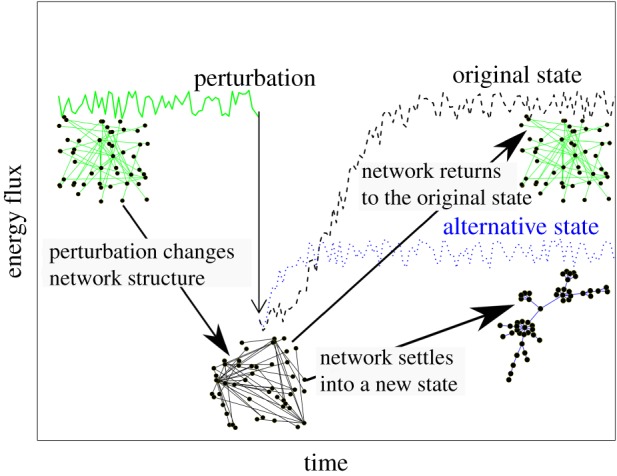Figure 2.

Aggregated soil microbial community properties (e.g. the total flux of energy through the community, see y-axis) emerge from the interactions that link different species in an ecological network. In the networks of this figure, solid dots represent different species and the lines connecting them the flux of energy between the connected species. The sum of energy fluxes across all possible species linkages is the total flux of energy through the network (y-axis and solid green, black and blue lines that show fluctuation of energy over time). Energy fluxes between species, and hence the total flux of energy, change over time (fluctuating green, solid line, that is that phase before any perturbation is applied), for example, in response to seasonal variation in soil abiotic properties, such as water availability. Perturbations (arrow) such as droughts alter these natural dynamics and change the structure of the network (compare the network with green linkages, before the perturbation, with the network with black linkages, after the perturbation), and thus total energy flux. Here, we assume that a sharp decline in microbial diversity and function decreases total energy flux, at least in the short to medium term. Over time, ecological networks fluctuate and reassemble to either recover to their original state (dotted black lines, network with green linkages) or settle in a new state (dotted blue line, network with blue linkages). A mechanistic understanding of the resilience of aggregated properties such as total energy flux requires a quantification of the natural variability of soil microbial networks over space and time and an understanding of how these networks reassemble in response to perturbations.
